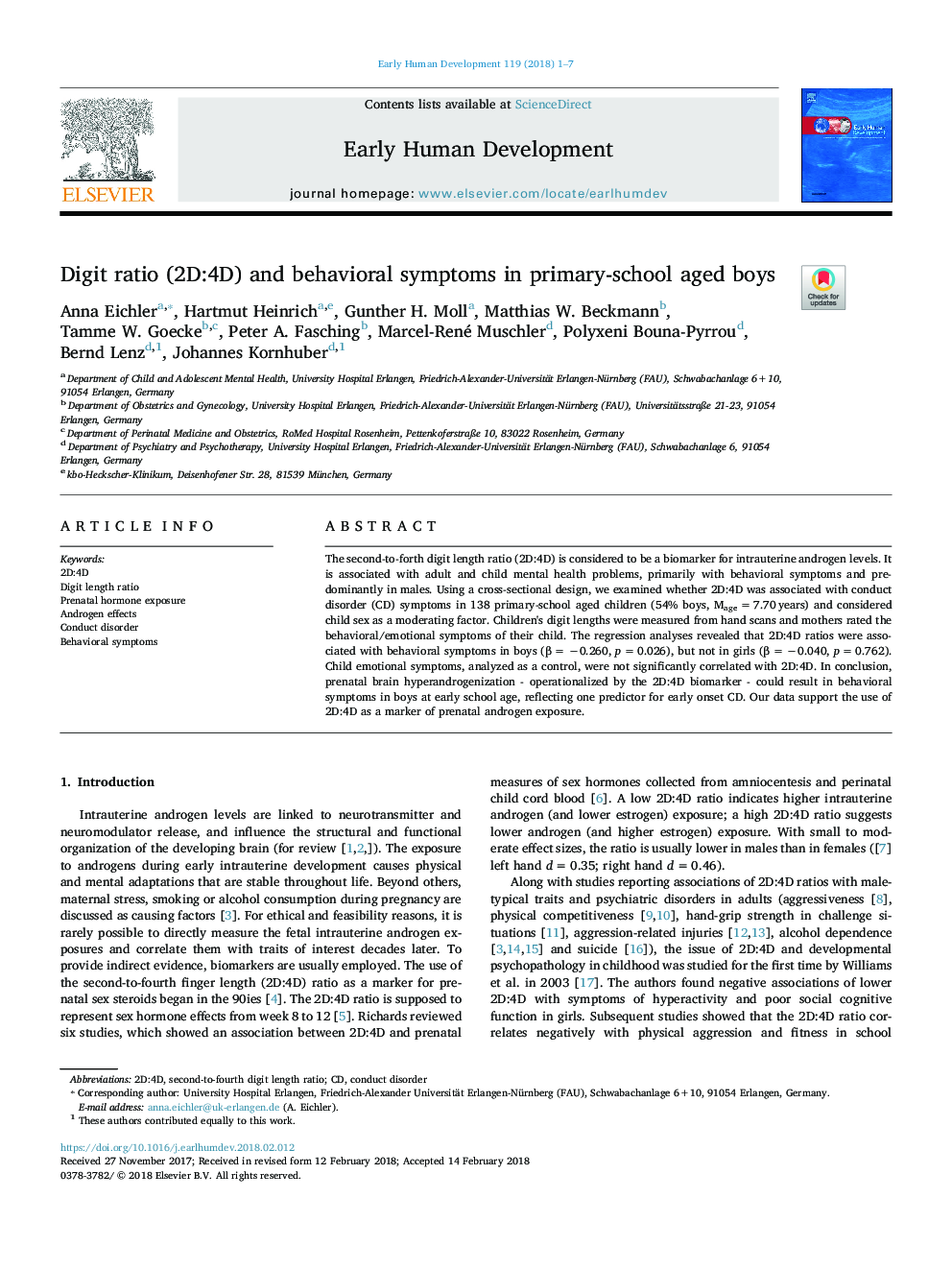| Article ID | Journal | Published Year | Pages | File Type |
|---|---|---|---|---|
| 8777669 | Early Human Development | 2018 | 7 Pages |
Abstract
The second-to-forth digit length ratio (2D:4D) is considered to be a biomarker for intrauterine androgen levels. It is associated with adult and child mental health problems, primarily with behavioral symptoms and predominantly in males. Using a cross-sectional design, we examined whether 2D:4D was associated with conduct disorder (CD) symptoms in 138 primary-school aged children (54% boys, Mageâ¯=â¯7.70â¯years) and considered child sex as a moderating factor. Children's digit lengths were measured from hand scans and mothers rated the behavioral/emotional symptoms of their child. The regression analyses revealed that 2D:4D ratios were associated with behavioral symptoms in boys (βâ¯=â¯â0.260, pâ¯=â¯0.026), but not in girls (βâ¯=â¯â0.040, pâ¯=â¯0.762). Child emotional symptoms, analyzed as a control, were not significantly correlated with 2D:4D. In conclusion, prenatal brain hyperandrogenization - operationalized by the 2D:4D biomarker - could result in behavioral symptoms in boys at early school age, reflecting one predictor for early onset CD. Our data support the use of 2D:4D as a marker of prenatal androgen exposure.
Related Topics
Health Sciences
Medicine and Dentistry
Obstetrics, Gynecology and Women's Health
Authors
Anna Eichler, Hartmut Heinrich, Gunther H. Moll, Matthias W. Beckmann, Tamme W. Goecke, Peter A. Fasching, Marcel-René Muschler, Polyxeni Bouna-Pyrrou, Bernd Lenz, Johannes Kornhuber,
